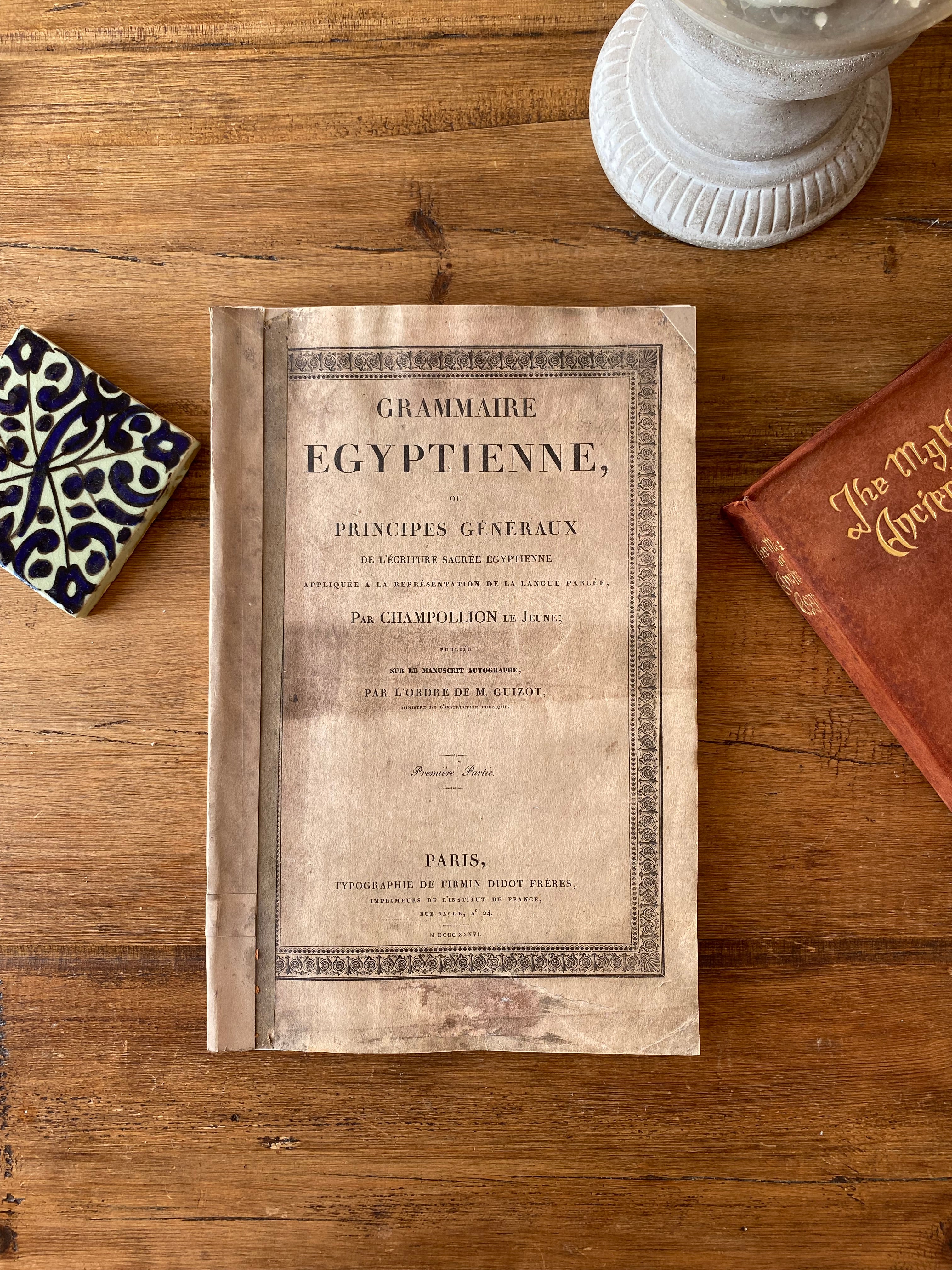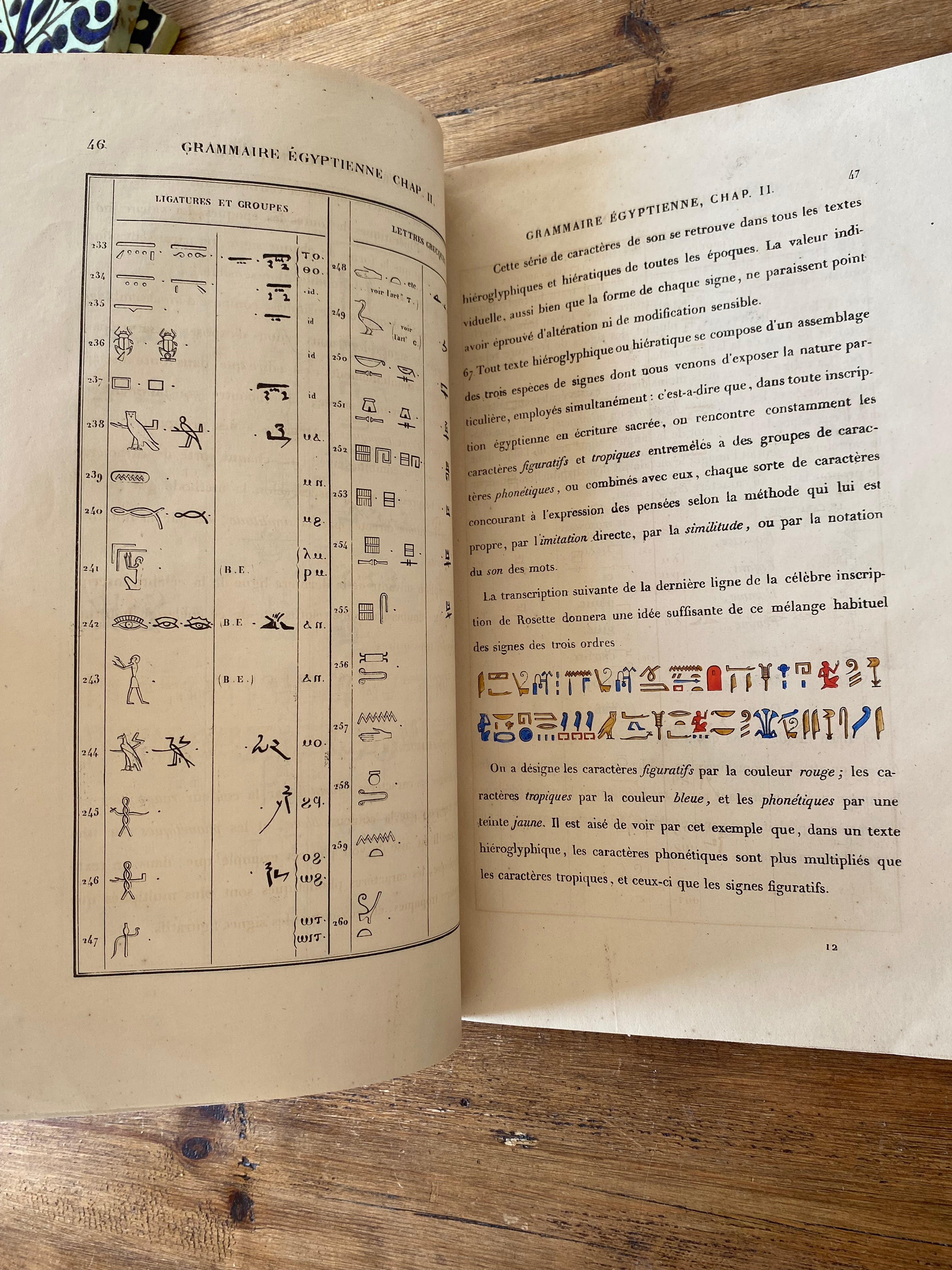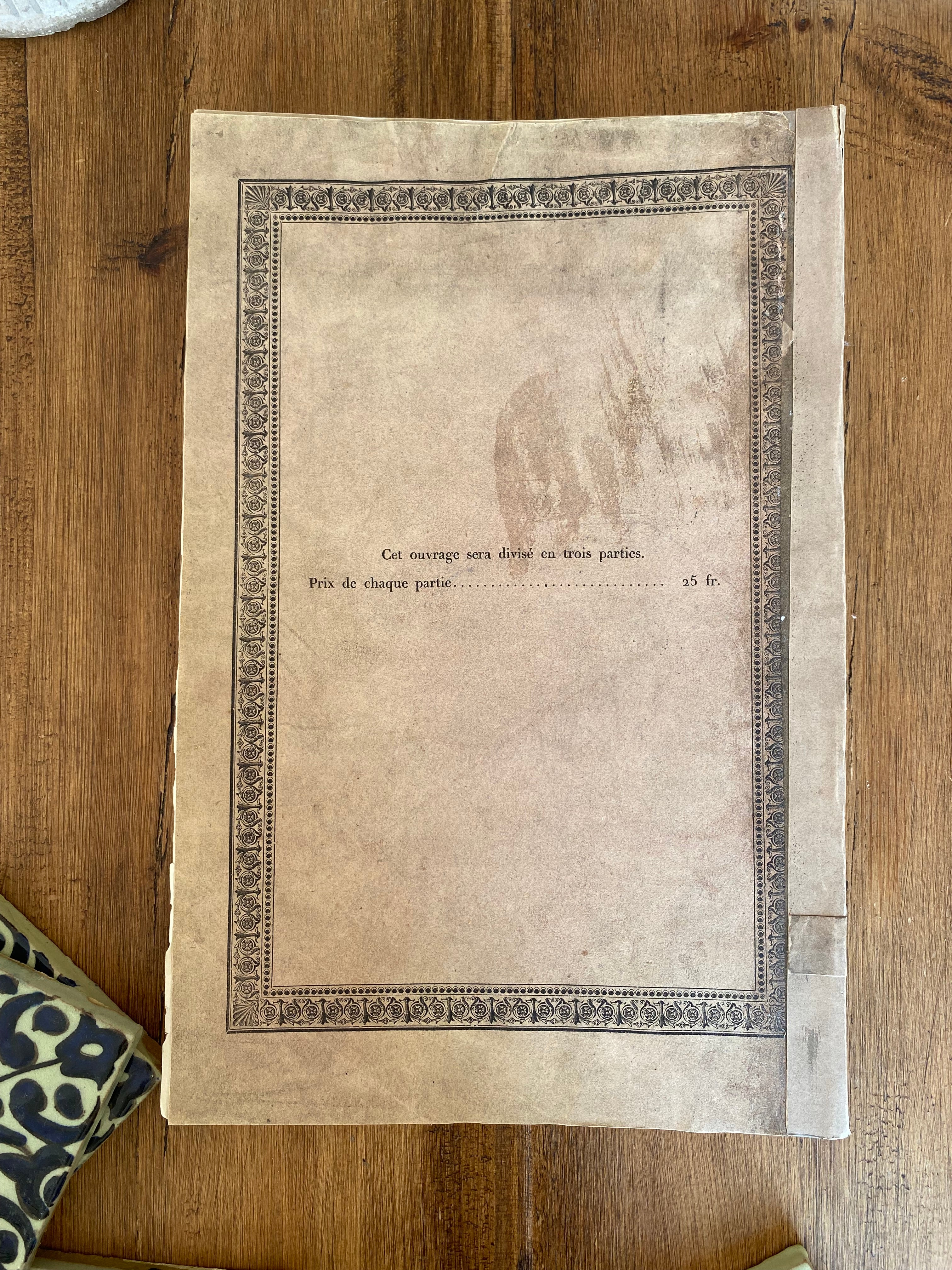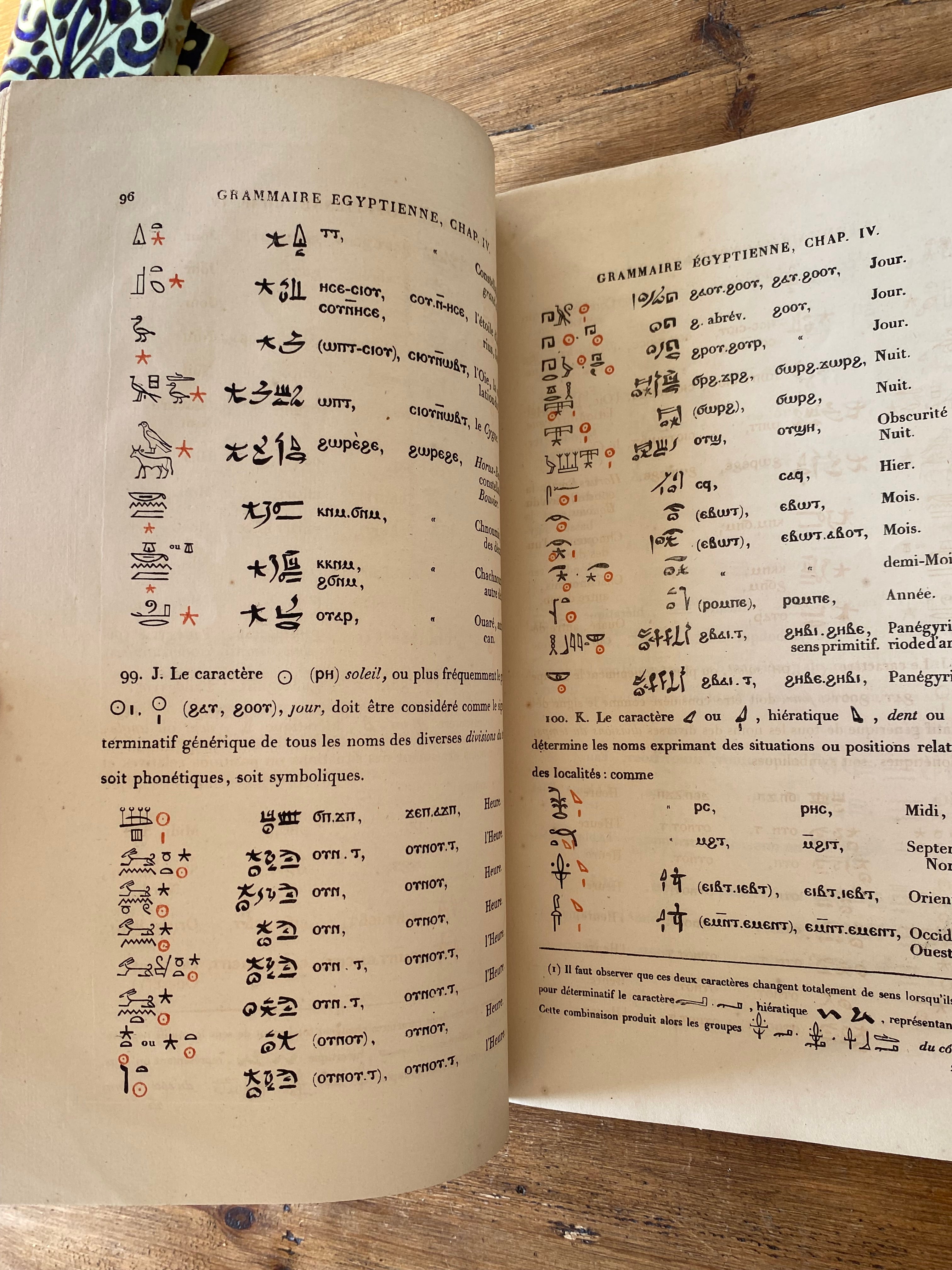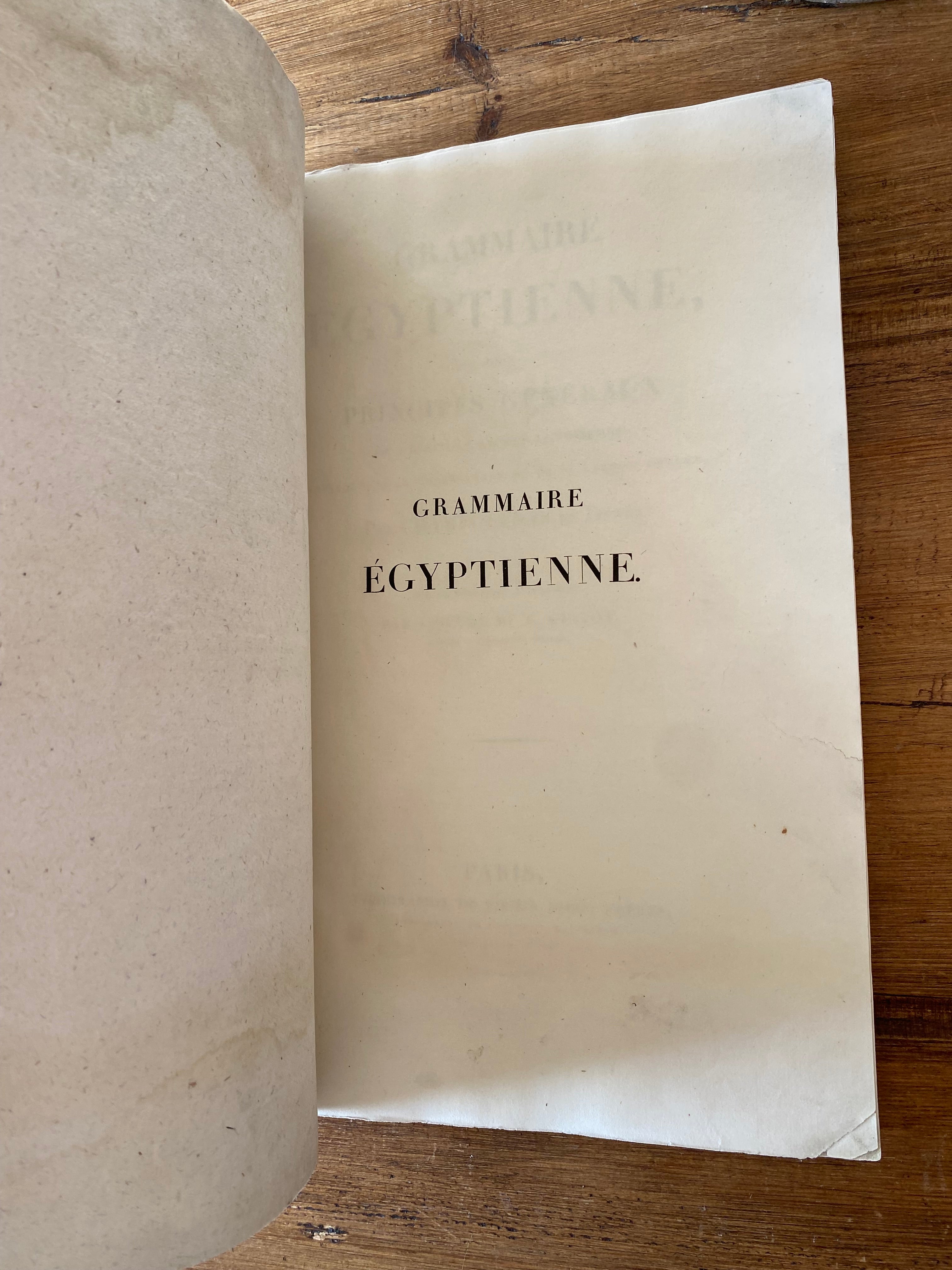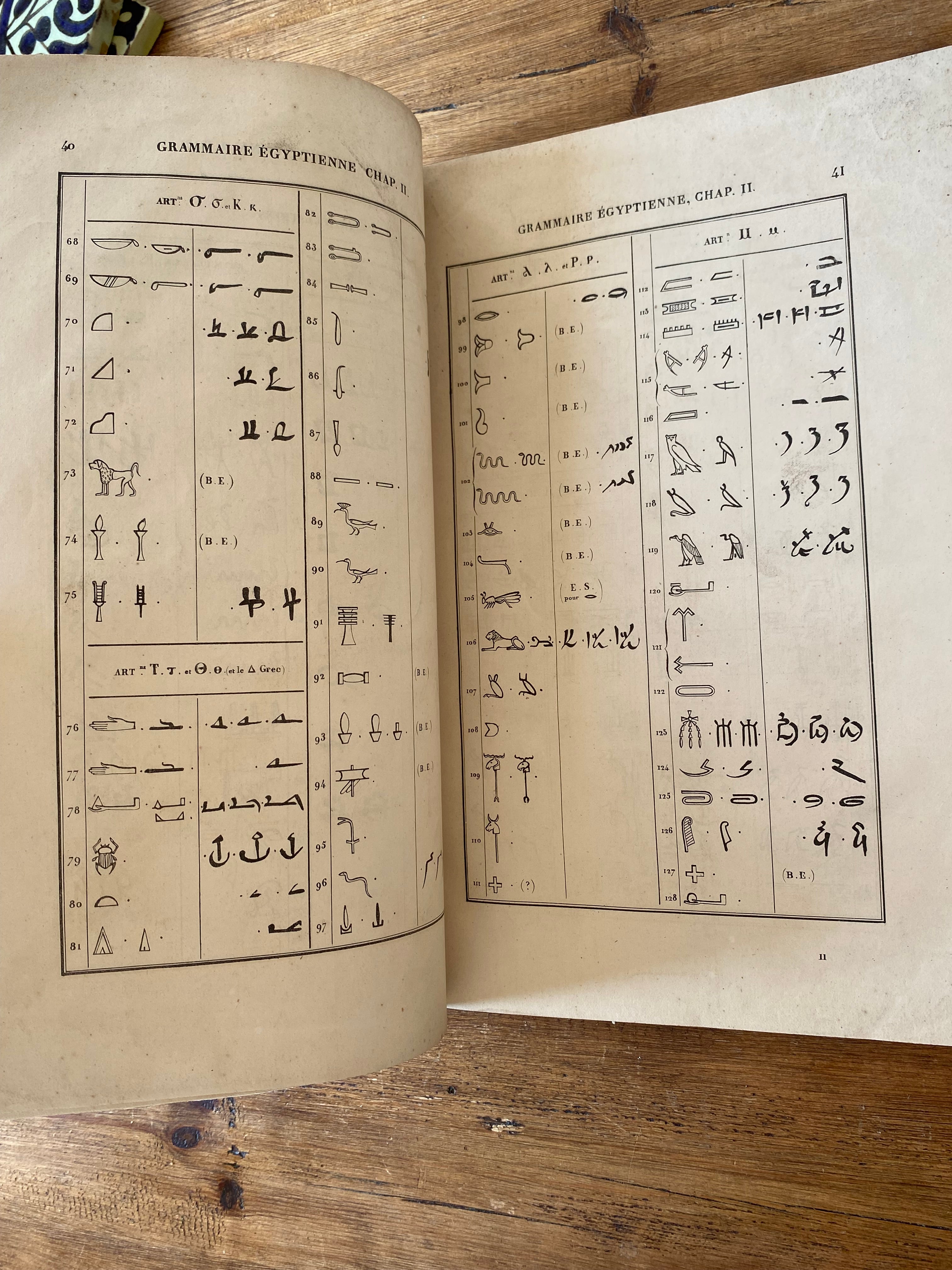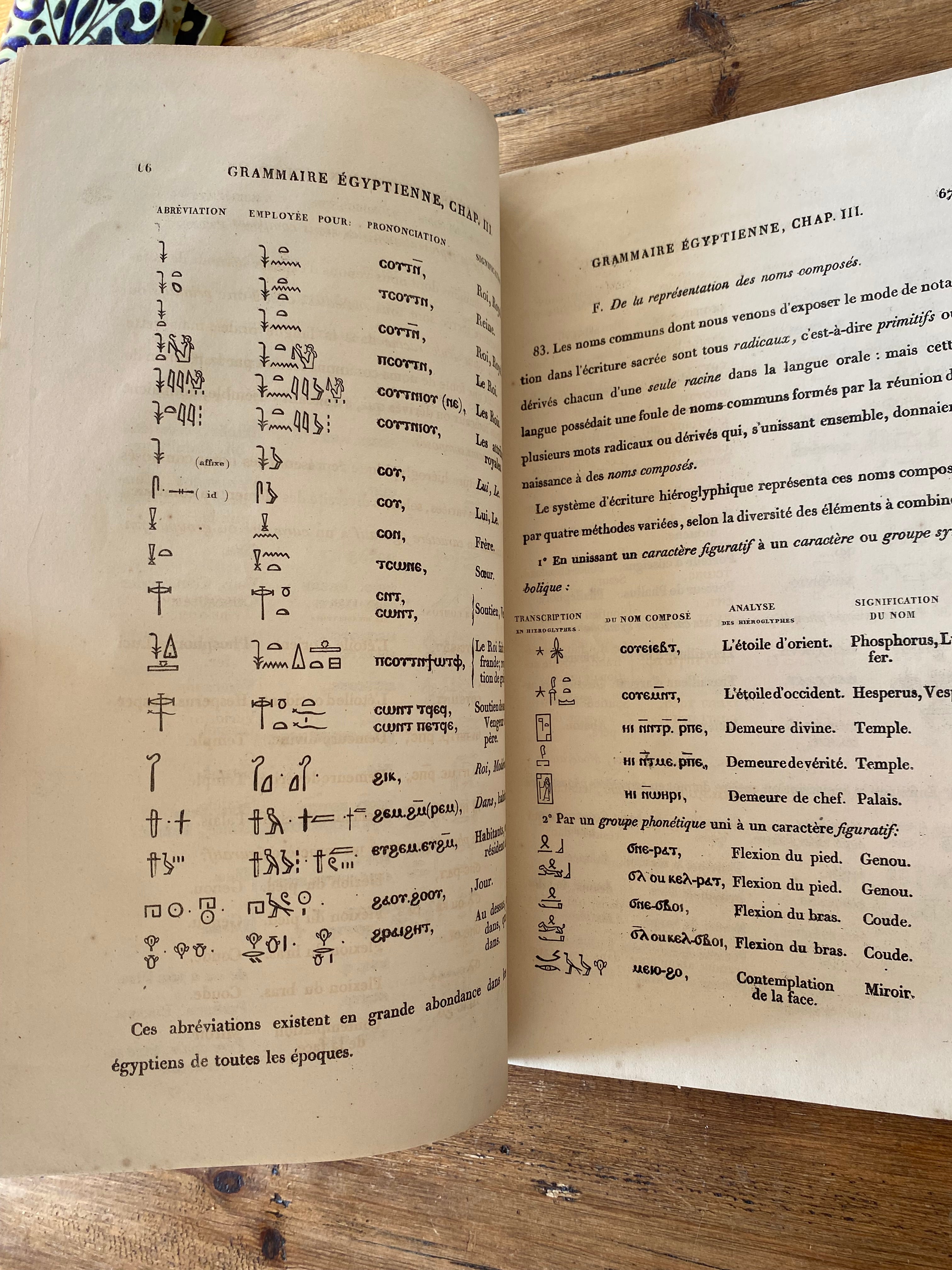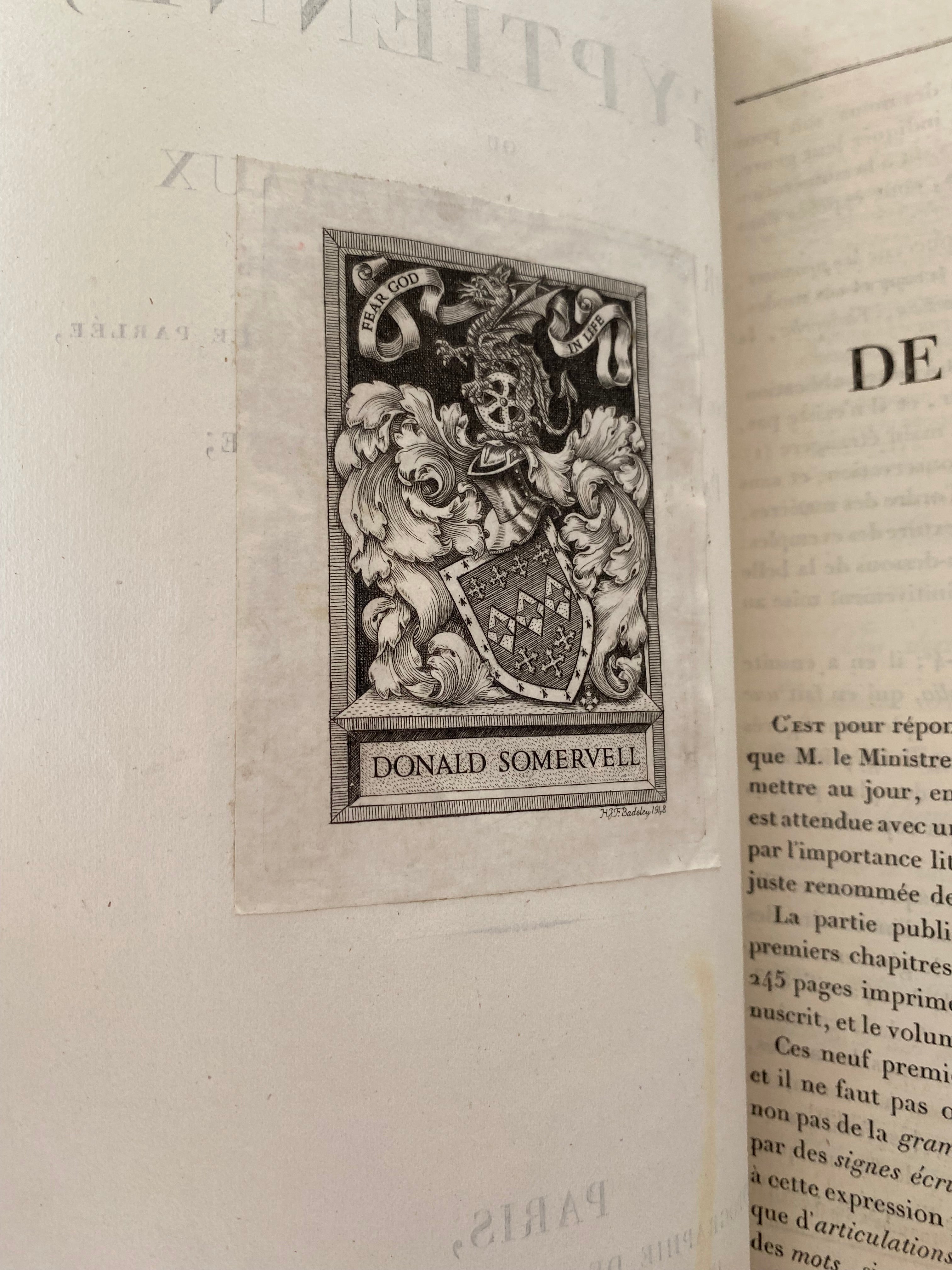Grammaire Egyptienne | 1836 [1841], first edition of the first ever work to translate Hieroglyphs, in the original publishers wrappers.
The birth of modern Egyptology. This example is in the original wrappers - one is seeing this work as the very first readers would have in the 19th century.
Exclaiming 'Je tiens l'affaire, vois!' ('Look! I've got it!") and then collapsing to the floor, the French scholar Jean-Francois Champollion cracked the Rosetta Stone 200 years ago. All subsequent Egyptology comes from this moment: Carter finding Tutankhamun's tomb, the Khufu Ship and more, it all comes from this epoch defining moment.
Now, a few years after Champollion cracked the Stone, he published this monumental work, the Grammaire Egyptienne. In this, Champollion taught a Victorian public fascinated by Egypt how to read hieroglyphs. It is the grand summation of his work and laid the foundations for everything that came after.
From a publishing standpoint it is also incredibly important as it contains the first printed list of hieroglyphs; 260 in all. The printing, from Champollion's meticulous manuscript, was a complex process. It required a special combination of all the standard alphabetic languages (French, Latin, Greek, Coptic, etc.) to be set in the usual way in type, leaving blank spaces for the hieroglyphs. The typesetting was then transferred to lithographic plates where the hieroglyphs were engraved and then each page, including type and hieroglyphs, was reprinted lithographically. This was the first time such a technique was used in France. Rare in the original printed wrappers.
With the bookplate of Donald Somervell. Baron Somervell of Harrow, OBE PC was a British barrister, judge and Conservative Party politician. He served as Solicitor General and Attorney General from 1933 to 1945 and was briefly Home Secretary in Winston Churchill's 1945 caretaker government.
First edition, lithographed hieroglyphs throughout, some printed in red, a few in colours, occasional offsetting, original printed wrappers, upper and lower covers backed with a few repairs and some restoration to extremities, rebacked, some marking and toning to covers.
Published by Firmin-Didot, Paris, 1836 [1841].

